Ministry of Intelligent Design (MID) Dedicated to Ministry Healing
Mid vision statement
We envision re-establishing humanity to a spirit-filled thriving longevity as Creation intended regardless of race or creed(Genesis6:3 KJV).
“And the LORD said, My spirit shall not always strive with man, for that healsoisflesh: yet his days shall be an hundred and twenty years.”
Mid mission statement
Our mission is dedicated to maturing andhealing both the human soul and vessel of the soul as the Creator instructedand performed. Our ministry healing efforts and guidance will drive forthaligned spirit-filled grass-roots community initiativesdriven by families.(Matthew 10:1 KJV; John 14:12 KJV)
“And when he had called unto him his twelve disciples, he gave them poweragainst unclean spirits, to cast them out, and to heal all manner of sicknessand all manner of disease.”“Verily, verily Isay unto you, He that believeth on me, the works that I doshall he do also; and greater works than these shall he do; because I gounto my Father.”
About Ministry of Intelligent Design (MID)
(1) thousands of testsubjects,
(2)remotelylivingat a distancefromcontrols ofnon-long-livingpeople downhill, which
(3) setthe scene of basically controlled experimentsinto thriving human longevity, spanning
(4) a collective 7,500 years

Our BoD History
Learn how ancient cultures like the Hunzakuts and Abkhasians live healthy, happy lives—naturally and simply.
Deciphering the Long-Living “Longevity Lifestyle” of the Himalayan Hunzakuts
(01) In 776 B.C. the Olympics was first conceived and then established by the ancient Greeks. Of all the amazing feats displayed in their historical artwork, one stands out above all others. It is their pictorial and written ac counts of the long jump competition. And for good reason. Of all the events in the Games, this competition was the most revered over any other feat of strength, endurance and overall physical skill.
( 2 )The champion long jumper of these ancient games (480 B.C.) was Phayllos of Kroton. His longest jump at the Games was reportedly fifty -five feet in a single jump! In these ancient Games, long jumpers included hand – held stones (called Halteres) used as weights. Apparently, their technique during the jump was to swing the Halteres while launching off the ground, and then holding onto them during the jump. These weights averaged between 1 to 4.5 kilos each.
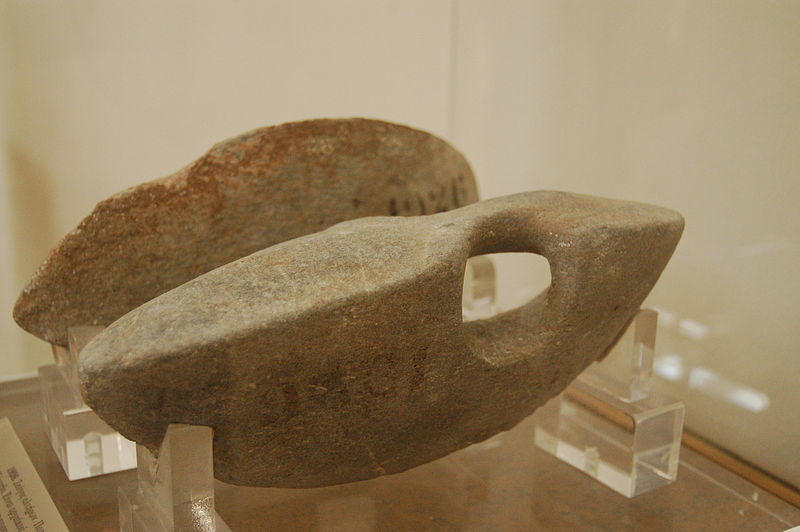
03
Now, keep this in mind. The current world record fo r the modern - day long jump is held by Mike Powell, which remains unsurpassed since 1991 . Powell Home Page Content with photos-06-26-25.docx jumped 8.95 m (29.4 ft). Yet, legend holds that much longer jumps were the norm at many of these competitions. Debate today rages that the Halteres, when used p roperly, actually helped to propel these athletes to attain distances longer than our current day athletes are able to achieve. Hmmm, I sure would like to see today's athletes attempt such distances of 55 feet with these bulky Halteres!
04.
Four and a h alf centuries after the first Olympics, Alexander the Great (356 - 323 B.C.) set his army off to conquer the known world. And he did. At the end of his conquest in India, some of his generals who had taken wives along the way knew they would likely never ret urn home to Greece or retire to civilian life so they could simply raise a family in peace. You see, Alexander burned all the bridges that could return his army back to Greece. He did that because he was crazy with ambition and wanted his army to go on fighting and conquering forever .
05.
Fed up after many years of this kind of relentless dictatorship, a significant group of them decid ed to make a well - planned effort to go AWOL. They knew from the start that they had to flee to the most remote region possible, making it so that they and their families could never be found. They all knew what the price would be if Alexander ever found th em. So, according to Hunzakut legend, they fled into the most remote extreme elevations (~8,000 feet above sea level) , into a valley surrounded by the highest Himalayan Mountains . This region where they settled is now called Hunzaland. Present day Hunzaland is now located in extreme NW Pakistan .
06.
From this point forward, their powerfully expressive Greek genes were to develop optimize d human performance , but also extreme human longevity . This gene pool would become an "autochthonous" culture, me aning as their generations ensued, they never mixed with other cultures for over two thousand years . However, this autochthonous adherence that generated extreme longevity required a precise set of circumstances , (a) remoteness, (b) a precise combination of mineral rich - waters, together with (c) extremely fertile soils , (d) all enjoying pristine purity.
07.
Today it has been established with modern DNA analysis that the Hunza kuts (Burusho) are indeed the descendants of the ancient Greeks via the conquests of Alexander the Great.
08.
As the Hunzakut legends record , the se Greek family mutineers eventually located what they thought would be a most perfectly remote and highly defensible region to settle . There, they decided to make it their new home, to make their last stand if necessary, living out a life of self - determined freedom at any and all costs. As stated above, t hey settled in a high mountain valley at an altitude of over 7, 999 feet . This valley was surrounded by a defensive cloak of mountains on all sides . O nly the narrowest of passage ways to gain access from the south provided an entry doorway into the Hunza valley -- the perfect defensive terrain for easily preventing Alexander’s army from tra cking them down . This otherwise uninterrupted ring of mountains extended upwards into the 25,000 - foot level . B asically , there was just one low altitude entrance to their flank, and one low altitude exit to their front , which is now the most western border t o present - day China).
09.
The se warriors learned to most skillfully master defensive strategies taking advantage of these most narrow and extraordinarily steep mountain path way s . This also led to perfect ing their strength and endurance even more than ever before (physical fitness is essential to gaining extreme longevity) . As the generations of their offspring ensued, t hey taught and led their children to do the same and acquire an extreme thriving longevity .
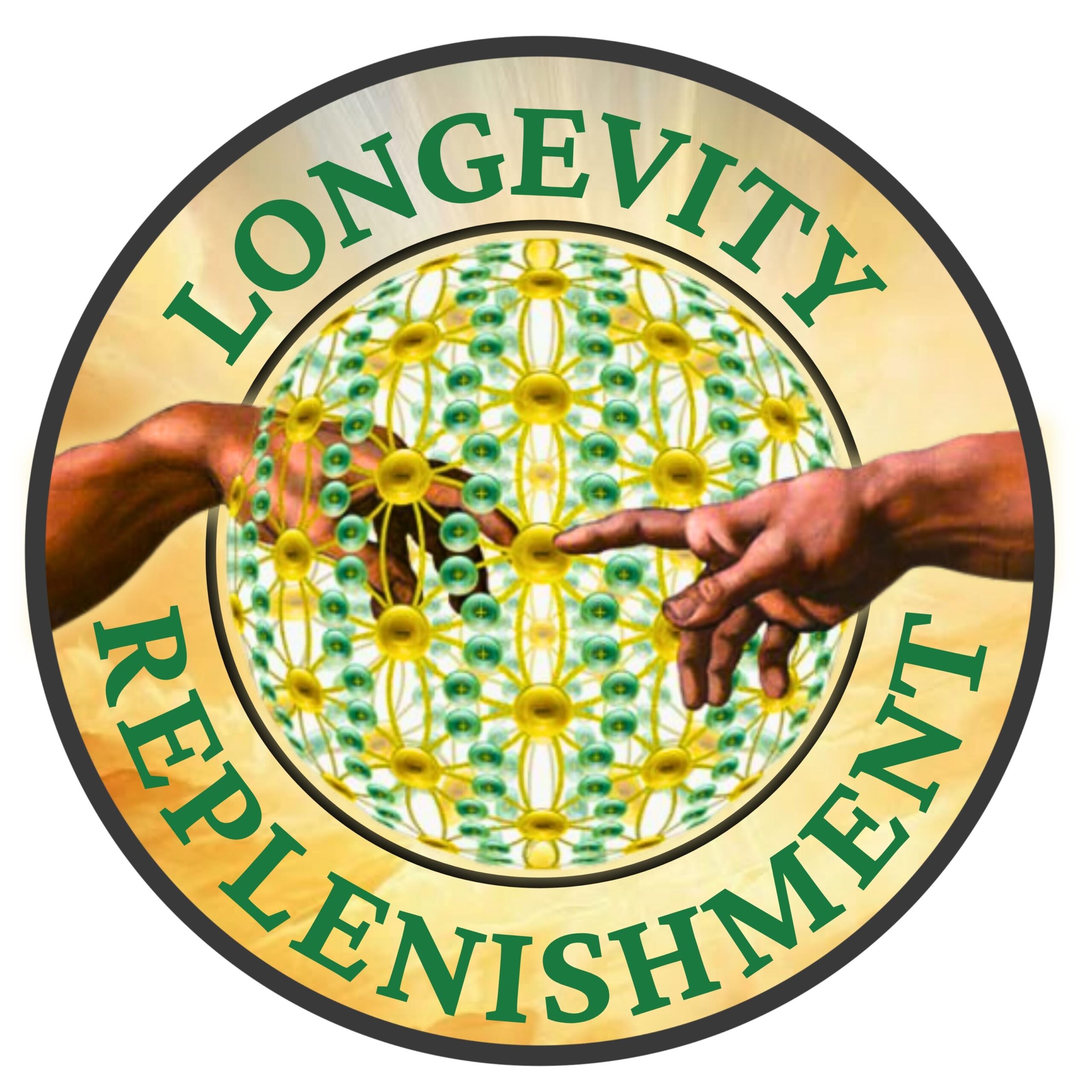
10.
The low oxygen content of the air made these Greeks adapt to extract and maximize metabolically utilizing available oxygen. Their VO2 levels must have been nearly beyond measure . Together with the incredibl e physical fitness and high VO2, these Hunzakuts achieved cardiovascular health and endurance no invading army could challenge. This also led to their culture achieving no heart disease or other chronic illnesses so common today.
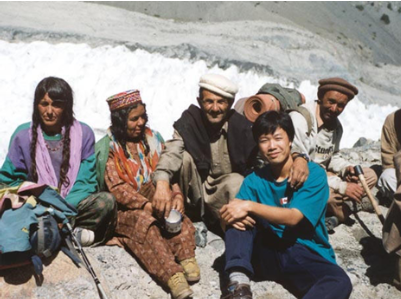
12.
For superior nutritional replenishment, the Hunzakuts extracted out of the waters and land every ounce of nutrition . They built elaborate terrace d farmlands on the sides of their steep mountains. The Greeks were comprised of some of the best engineers , agra rian experts , craftsmen and tool makers known in those days. They easily developed irrigations systems that carried unto their multi - tiered , south - facing terraced farmlands super colloidal mineral rich , high Zeta - potential water. And t his enabled their farmlands to grow regenerative nourishments. They especially favored sprouts and early baby lettuce s as part of their longevity replenishment practices . sprouts and early baby lettuce s as part of their longevity replenishment practices .
11.
S ave perhaps for the Abkhasians 3,000 miles away living in the high foothills of the Caucasus Mountain range , the Hunzakuts were among the most accomplished of the long - living human cultures ever comprehensively studied . The Hunzakut lung, heart and muscular capacity simply became monstrous in terms of how we civilized folks live our lives in bodies so puny in comparison. Th ose that kept their immune systems strong through fasting and herbal medicines, would ensure their future generations grew in immune strength, as opposed to diminishing in immune strength. Those that did not learn to properly fast and use select herbal teas (known as Hunza tea ) were eliminated from the reproducing Hunzakut population .
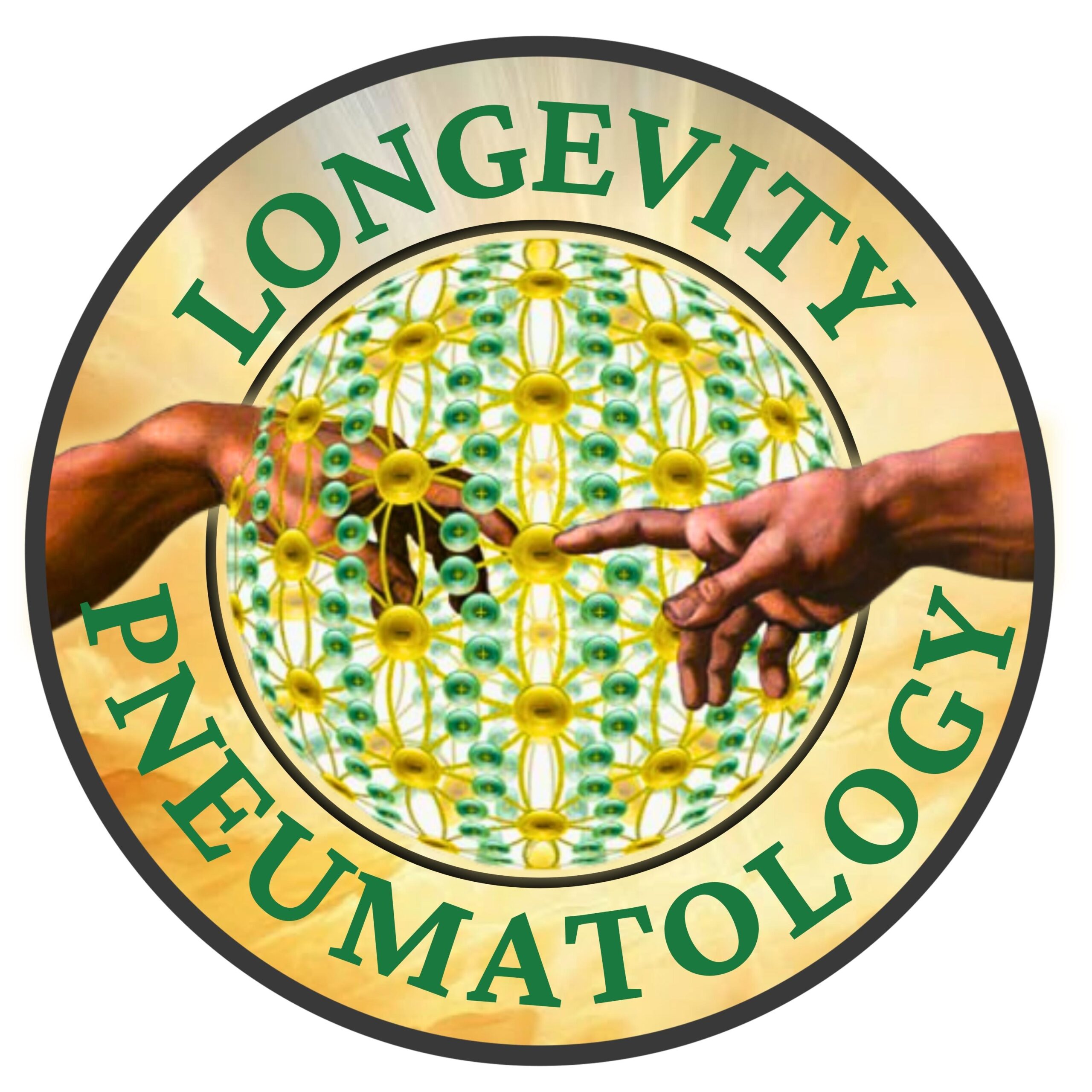
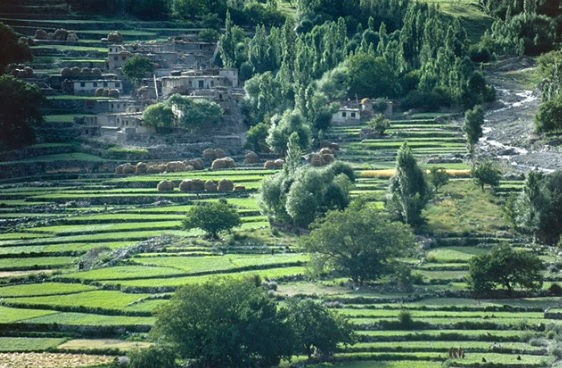
13.
This band of warrior Greeks would have possessed all the known Greek agrarian technologies, craftsmanship, tool m aking skills and knowledge of their day. And this great cultural advantage would have established advanced farming methods that included well - engineered irrigation systems and soil fertility techniques way more superior to anything we have in this modern e ra . Their crops, animals and human cell physiology thrived fantastically . Natural selection dictated both the fall and rise of their lineage according to the proper practice of the stewardship of their land . And this led to the ultimate perfection of the human constitution.
14.
And this Greek system of evolving an autochthonous long - living culture was able to be perfected in closer to their motherland. For example, another ancient Greek culture perfected another Shangri - La in the high elevations on the Greek Island of Ikaria just southeast aways o ff o f Athens . Even up to our present t oday , the Ikarians enjoy the highest number of robust and healthy nonagenarians (90+ year olds) per capita in the known wor ld.
15.
But le t’s travel back now in time, jumping all the way back to 323 B.C. , and th en time - traveling up nearly 2,200 years in to the early part of the last Home Page Content with photos-06-26-25.docx century , and then most precisely into the time period stretching from 1900 to 1940 .
16.
1900 - 1940 - Overview of the physique & constitution of t he p ristine t raditional a dhering Hunzakuts or pta - Hunzakuts) - by Major - General Sir Robert McCarrison (1878 - 1960) . McCarrison was a British Surgeon who spent over thirty years living among the pta - Hun zakuts studying their longevity lifestyle, unique soil fertility, exquisite health, dietary replenishment , and these combined factors inducing each of their respective impacts upon the pta - Hunzakut constitution who all thrived into extreme longevity .
17.
Toward the end of his career, McCarrison served as the King of England's physician. He became knighted for his dauntless and impeccable scientific work as reflected in the adjoining book . By 1930, McCarrison had elucidated the exact set of pristine factors, traditional practices and ecologic conditions that blessed the pta - Hunzakuts and endowed them with a near perfect human constitution.

18.
Early in his career, he proved via thousands of rat studies that the ir superior dietary replenishment was laden with super - rich colloidal regenerative factors ( cRFs or longevity replen i shment TM ) . Such longevity replenishment came from the incredible mineral rich , proteinaceous soils prevalent in the Hunzaland multi - tiered terraced farmlands. Once compelling example of Hunzakut super food replenishment were their apricot orchards, which provided apricot fruit, apricot seed oil and cancer checking apricot kernels.
19.
Later, George T. Wrench (The Wheel of Health) was to comprehensively review the qualities to the Hunzaland soil and link this knowledge base with the most renowned researchers in soil science of his day, such as William Albrecht (also see below), Sir John Orr (On Minerals in Pastures), Sir Albert Howard (The Waste Products of Agriculture), and Professor FH King (Farmers of Forty Centuries). This body of work then subsequently established the optimal reference standards for super soil fertility, an absolute requirement for deriving optimal levels of cRF s TM in the dietary
20.
However, even before McCarrison arrived on the extreme NW of India to conduct his studies, Biddulph (cited by Wrench) documented that civilization was already encroaching upon the pristine traditional ly adhering people. That began in earnest sometime between 1880 and 1911. This infiltration arrived in at least two forms: (A) By the British's road project utilizing superior road construction techniques (they wished to open commercial trade from southern India into China), and by... (B) Gradual infiltration of modern food technologies which compromised the delicate pta - Hunzakut traditional food chain
21.
Thus, with the (1) new additions of non - Hunza people now freely able to immigrate into the regio n, plus (2) the slower infiltration of British dietary practices upon the unsuspecting p rimary t raditional a dhering Hunzakuts (or pta - Hunzakuts), there arose an ever incrementally growing sub - population of both in Hunzaland. And as their descendants ensued , both these (a) "imposter" and (b) non - primary traditional adhering people in Hunzaland continued to call themselves Hunza kut s. For the purposes of the remainder of our discussion, we will call this dual constituent sub - population "non - pta - Hunzakuts."
22.
The telltale sign of these non - pta - Hunzakuts would have been their inferior constitutions. In other words, for those trained in constitutional analysis ( AKA Body Mass Index – BMI - and Anthrop om etric s) , the subject's constitution tells all
23.
Those that immigrated into Hunzaland would obviously possess inferior constitutions t o the original autochthonous pta - Hunzakuts . McCarrison metic ulously documented that. But those Hunzakuts who allowed themselves or their children to slowly abandon their time - honored and proven pta - longevity lifestyle , necessarily los t their superior human co nstitutions. It might take years or even a generation or two for this abandonment of their strict pta - longevity lifestyles to fully degrade a family's constitutional lineag e. Hence, as studies proceeded over the decades by follow - on anthropologists , unsuspectingly “ compromised data ” would incrementally accrue with each passing generation . Hence, follow - on anthropologists’ observations would be seen as more and more contrary to McCarrison’s original findings.
24.
Prophetically , McCarrison warned of this phenomenon he termed "cumulative data corruption" . Nonetheless, his warning would fall on deaf ears within the academic anthropology community .
25.
In summary , all during this degradation process, season after season of newly arriving anthologists would be unknowingly victimized by “ cumulative data corruption ” phenomena. This phenomen on was a blind spot in their methodology of studying the Hunzakuts. Cumulatively over the decades, similar to one bad domino in the chain of research, one falls into the blind - spot , and the follow - on researchers all follow suit
26.
In contra-distinction from this error of being blind-sided by “cumulative data corruption”, both McCarrison and later Weston A. Price (see next section below) conducted extensive independent animal experiments to validate the pta-longevity lifestyle practices. (A) They undertook these studies in accordance with foods collected and prepared exactly as do pta-peoples living in their pristine environments. (B) These experiments were controlled, that is, one group received the optimal super food replenishment prepared according to pta-peoples' practices. The control group was fed the same foods, but grown and prepared conventionally, as was and still is common in human civilization. Results were startling.
27.
The first set of animals flourished exhibiting: (i) resilient thriving health with next to no disease observed), (ii) significant fitness, plus (iii) muscular physiques.

28.
The other groups fed foods of the same composition, only grown and prepared as in modern civilization, clearly were: (1) smaller, (2) obese, (3) weaker looking and (4) susceptibility to common diseases well-known to plague the selected animal group. Anthropometric measurements confirmed the stunted nature of these non-optimal animal constitutions.
29.
Beyond this use of actual anthropometrics and BMI, only Price began documenting human race degeneration via photographic records. He demonstrated repeatedly the effects of incremental degradation on the dental arches and jaw lines of members of pta-peoples who had adopted the ways of civilization. McCarrison would use his famous lectures to convey his clinical observations in the field of how much superior the pta-Hunzakuts were to other tribes and people. But without an actual methodology on how future investigators should follow-up these observations made by both men, this vital aspect to properly track OPS went no further.
30
Unfortunately, no ne of the future follow - on investigators traveling to the pristine regions of pta - peoples possessed or studied detailed historical records of exactly what characteristics had been their awesome BMI and Anthropometrics at the height of the Hunzakut culture . The original investigators , such as McCarrison and Price , were never trained in formal Constitutional Analy tic s, which over this same time frame had emerged in earnest in Italy (1880 - 1930) . What a miss – had either had such data , this would have changed th e face of medicine .

31.
In the absence of such Body Mass Index (BMI) and Anthropometric data, this encroachment would necessarily confuse the many follow-on researchers who began to question the longevity and vigor of the peoples living in Hunzaland, notably John Clark (1909- 1994). Clark was a geologist, not a physician or anthropologist, who fell victim to “cumulative data corruption”. He remained oblivious to his blindness for well over the 20 months he spent living among its people. Clark published a well cited book in 1957 entitled, Hunza - Lost Kingdom of the Himalayas. Clarks book is but one of the plethora of publications gone awry with blind spots. McCarrison,
32.
Of course, what Clark was actually seeing, but not recognizing it, was not a single season of constitutional degradation, but rather the end of the overall movie of the declining constitutional degradation process. In the absence of proper constitutional analysis data that in theory could have been initiated in 1882 forward, how could Clark have realized these were members of the ever-growing sub-population of Hunzaland, and not the pta-Hunzakuts?
33.
Documented by National Geographic magazine, the Ikarian centenarian shown was raised in America starting at age 5. As he grew into his fifties, Stamatis developed terminal cancer at the age of 54. He then returned to his Ikarian island homeland to die with family. But they put him to work gardening and practicing their longevity lifestyle. As a result, Stamatis went on to live for another 48 years. As I previously stated, pta-Hunzakuts rarely, if ever, required modern medicine of any kind, as comprehensively documented by McCarrison. So, we must place into correct context what the following statement truly means:
34
Clark's 20 months living among the peoples of Hunzaland in the later stages of Hunzaland's insidious degradation process (1950-1951) verses McCarrison's 30 years embedded among predominantly pta-Hunzakuts still in the early to early-intermediate stages of the encroachment process (~1901-1931).
35.
Both observed the Hunza health status but it was the context of these observations that mattered most. Although Clark apparently received training approximating that of an army medic, McCarrison was among the best trained and experienced physicians and surgeons in the world at that time to appraise the health status of the peoples living Hunzaland.
36.
McCarrison knew full well if he was treating an immigrant living in Hunzaland, verses a pta-Hunzakut. As McCarrison was well aware, if the pta-Hunzakut fell ill, they would simply use traditional herbal medicines and fasting to get well. Exceptions would include broken bones or other traumas, which McCarrison was an expert at setting.
37.
Some examples of these otherwise exceptional researchers besides McCarrison or Price, would have been NG Bennet, ZA Medvedev, EB Palmore, and GZ Pitskhelauri. Pitskhelauri‘s +30 year exhaustive pta-people investigations are exceptional and a landmark the meticulously details true longevity lifestyles at its best.
38.
Let's end this section with a great example of the fact our image was created after God, and that we are designed to thrive into longevity as stated in Genesis chapter 6. In the words of McCarrison, he wrote:
39.
"My own experience provides an example of a race, unsurpassed in perfection of physique and in freedom from disease in general, whose sole food consists to this day of grains, vegetables, and fruits, with a certain amount of milk and butter, and meat only on feast days. I refer to the people of the State of Hunza, situated in the extreme northernmost point of India. So limited is the land available for cultivation that they can keep little livestock other than goats, which browse on the hills, while the food supply is so restricted that the people, as a rule, do not keep dogs. They have, in addition to grains -- wheat, barley, and maize -- an abundant crop of apricots. These they dry in the sun and use very largely in their food.
Amongst these people the span of life is extraordinarily long; and such service as I was able to render them during some seven years spent in their midst (McCarrison's first embedding) was confined chiefly to the treatment of accidental lesions, the removal of senile cataract, plastic operations for granular eyelids, or the treatment of maladies wholly unconnected with food supply. Appendicitis, so common in Europe, was unknown. When the severe nature of the winter in that part of the Himalayas is considered, and the fact that their housing accommodation and conservancy arrangements are of the most primitive, it becomes obvious that the enforced restriction to the unsophisticated foodstuffs of nature is compatible with long life, continued vigour, and perfect physique."
40.
The resilience of these pta-Hunzakut constitutions could, in theory, be divided into three demarcations or categories: (A). Those which experienced essentially disease-free living up till the age of 90; (B). Those who experienced minor or gradual declines in disease-free living past the age of 90 (the long-living); and... (C). Those who lived to be over 120 years of age and generally only experienced a rapid decline in disease-free living when entering into their last few months or year of life (i.e., the extreme long-living).
41.
However, due to nonexistent written record keeping, and the lack of skill set of the earliest Hunzaland investigators, true age verification documenting the extreme long-living of the pta-Hunzakuts was lost to the world. Not so, however, for the Abkhasians who were meticulously documented to in many cases live up to 120 and beyond in health. These pta-people are discussed at length next.
42.
Also, it is universally acknowledged by linguists that there are but three ways of keeping records within any culture. The first is verbal. The second is written on paper-like recordings. The third is when historical records are written (etched) in stone or drawn on stone, such as within the Pyramids of Egypt. What is most interesting about this is, by all agreement, linguists feel the "verbal" method is the most accurate way an autochthonous culture passes down its history most accurately, since the words used can also convey tone and emphasis on the words, giving better context to what the real meaning is. Writing accounts cannot.
43.
Critics that do not support the fact of these resilient, thriving, long-living cultures point out studies by some anthropologists that alleged long-living peoples have motive to lie about their age to gain recognition and perhaps even sponsorships. Fortunately, the works of both McCarrison and Pitskhelauri, once studied, refute these contrarian anthropologists.
44.
In one case, I have even documented a fraud the western allies conspired together with a disgruntled son of a fallen colonel in the KGB. His son, a plant geneticist, not a physician or anthropologist or gerontologist, wanted badly to discredit anything he could regarding Stalin’s pet projects or contentions to avenge his fallen father. The plant geneticist was brave to make such an attempt, for by doing so he placed his life at great risk. But his methods employed had too many gaping holes to truly hold water. Nevertheless, the west ran with his story and the public soon forgot all about the Abkhasians who quite often live or exceed the age of 120 in good states of health. So, let’s take a look now into this marvelous long-living culture.

Deciphering the long-living longevity lifestyles of the Abkhasians.
There were over a dozen long-living cultures thriving in the Caucasus Mountain ranges of Soviet Georgia. Collectively, we will refer broadly to this group of cultures as Georgians, even though our primary focus is directed to one of these cultures known as the Abkhasians.
The Abkhasian culture is comprised of both Christians and Muslims.
Prof. Pitskhelauri elite team of specialists’ spent four decades studying hundreds and hundreds of these longest-living peoples.
Pitskhelauri wisely observed that aging is commanded by: (A) genetic resilience, (B) environmental determinants, as well as (C) lifestyle practices. His highly qualified team of specialists isolated many, but far from all, of the key environmental determinants that optimized both genetic expression and intracellular enzyme systems that govern life (proteomics). Both are responsible for bringing about thriving longevity in human beings.
MID specifically focuses on the genomics and proteomics of the long-living, and pertaining modern day references to effectuate our ministry of healing.
Digging deeper, Pitskhelauri’s team identified key aspects to these long-living peoples’ lifestyle that became clearly discernable to the highly trained eyes of his team.
Careful reading of his team’s findings identified seven persistent practices these long-living people performed 24/7, which was thought to be the foundation to their thriving longevity. Namely:
- Cleansing, detoxification, purification and ‘earthing’ practices;
- Daily exercise which included deeply breathing and at regular times joyful choir singing and dancing;
- Longevity Replenishment rich in (a) colloidal regenerative factors (cRFsTM) and (b) rich amounts of a full-spectrum of minerals, consumed in amounts never in excess;
- Adequate deep restful sleep;
- Mental discipline, morality, devotion to God, joyfulness, thankfulness, playfulness and good humor;
- Full spectrum sunlight exposure;
- Pollution-free, pristine air, food and water.
Meticulous verification of these long-living peoples’ collective lifespans was established. I quote from his 1982 writing on pages 50-1.

“Recognizing the importance of establishing the accurate age of long-living persons, the Institute of Gerontology of the USSR Academy of Medical Sciences included rechecking and documentation of age in its program of medical examinations of selected persons 80 years and older. According to the method used, the year of birth is ascertained by a systematic comparison of all entries in the chart dealing with birth year and age. The information on birth certificates is taken under consideration, as well as the passport, village council accounting books, and other documents… These data (besides birth certificates) are compared with the questionnaire data and other questions on the chart where age and year are shown. When determining age, the subject or closest relatives are closely questioned. Information gained from such interviews are correlated with events of historical, local, and familial significance.”
Throughout the ~40 years of these meticulous studies, his team of gerontologists, anthropologists and physicians memorialized these long-living individuals by (i) making extensive photographic records, in addition to (ii) meticulously taking and recording their personal and family histories, plus (iii) charting thoroughly examinations on both their mental and physical characteristics.
Throughout history one can find numerous examples of persons having lived for extraordinarily long periods of time. Always it comes down to their optimal expression of their gene resilience, pristine environment and unique lifestyle.
Skeptics allege (without sufficient or relevant proof) that collecting accurate verification of the extreme long-living (~120 years of age) cannot be reliably ascertained due to (1) inadequate written records and (2) the phenomena of ‘age exaggeration’. The latter is alleged to be committed by individuals seeking unearned prestige. One long-living culture inhabiting Peru’s high altitude mountainous La Convencion Province, is known as the Vilcabambans. However, this culture was plagued by a small sub-population living mainly offsite, were addicted to alcohol, drugs and sex. Individuals comprising this sub-population besmirched the true factual longevity lifestyle practiced by this otherwise long-living culture. Other pta-peoples would never tolerate this immoral behavior within any sub-population living onsite. But alas, critics often hyperventilate about this one Peruvian sub-population of intoxicated thugs, insinuating without proof that all long-living and especially extremely long-living cultures located anywhere else in the world are guilty of ‘age exaggeration” tales.
But in the cases of these two cultures discussed here on the MID Home page, plus more recently many other long-living peoples studied in the Blue-Zones, the evidence backing these skeptics is hollow, scant or absent and of limited merit. The only argument which may have a small impact on the calculated number of years of longevity, could be a slight difference between the Islamic calendar (which uses either 29 or 30-day monthly cycles) vs. the standard Gregorian calendar comprised predominantly of 30 to 31 day monthly cycles.
Russian Georgia lies between the Major and Minor Caucasus Mountain chains, along an area of 70,000 square kilometers. There are glaciers of the high ground melt each Spring forming glacial milk. We showed this glacial milk earlier by a photo of several Hunzakuts sitting at the edge of a rapidly flowing milky-white high-mountain river stream. These Spring melts of downhill rushing mountain spring waters are channeled by elaborate irrigation systems into the multi—tiered, terraced low lands. The majority of those long-living preferred dwelling in such elevated rural areas of Georgia, with about 15% gravitating to the low-land city areas.
Specifically, approximately 85% of the long-living prefer to live at altitudes from 1,500 feet to 4,500 feet above sea level. This places the pta-Hunzakuts about 3,000 feet higher in altitude than most of the Georgians. The point here is that the long-living had to adapt to make the most efficient use out of available oxygen at these great heights. As far as we are concerned, this directs us to study the Biblical principles of Pneumatology and the Breath of Life in the context of the longevity lifestyles of the long-living. The clue here is that oxygen atoms are energy liberating sources of electrons, so vital to the Breath of Life. And UV light which is much more prevalent at higher altitudes is an amazing contributor through the human eyes and skin of extra electrons which flow directly into our cells’ energy producing systems. Thus, the long-living who dwell at higher altitudes may in part make up for the their lower atmospheric oxygen concentration by their daily extra exposure to UV light.
Several very important facts to bear in mind is that it was customary whenever an infrequent cold came on, that those individuals would fast , bath and drink in abundance their glacial milk. Also note this glacial milk serving as a primary fertilizer, was profusely routed to irrigate their cherished nut tree orchards, making those nuts into true longevity replenishment rich in minerals.
So It comes as no surprise that whenever an Abkhasian was asked about their longevity, they referred to their high intake and utilization of their beloved glacial run-off water.
Due to the rapid downward flow of the mineral rich glacial milk, whirlpools form everywhere, which brings about structured (low surface tension) high Zeta-potential (high surface energy) colloidal mineral water.
This lower surface tension of the water, in effect makes this water more ‘wet’ or more easily able to penetrate into cells after drinking, thereby more effectively delivering more energy-rich minerals to the cells, as well as then more efficiently pick up waste and exit the cell, bringing about enhanced detoxification of their tissues.
So, we highlight this aspect of the Caucasus long-living people to be a key determinant to their longevity.
Several very important facts to bear in mind is that it was customary whenever an infrequent cold came on, that those individuals would fast , bath and drink in abundance their glacial milk. Also note this glacial milk serving as a primary fertilizer, was profusely routed to irrigate their cherished nut tree orchards, making those nuts into true longevity replenishment rich in minerals.
So It comes as no surprise that whenever an Abkhasian was asked about their longevity, they referred to their high intake and utilization of their beloved glacial run-off water.
Due to the rapid downward flow of the mineral rich glacial milk, whirlpools form everywhere, which brings about structured (low surface tension) high Zeta-potential (high surface energy) colloidal mineral water.
This lower surface tension of the water, in effect makes this water more ‘wet’ or more easily able to penetrate into cells after drinking, thereby more effectively delivering more energy-rich minerals to the cells, as well as then more efficiently pick up waste and exit the cell, bringing about enhanced detoxification of their tissues.
So, we highlight this aspect of the Caucasus long-living people to be a key determinant to their longevity.
Sing Up For Newsletters

Contact Info
© 2025 Ministry of Intelligent Design. Dedicated to spirit-filled thriving longevity.
